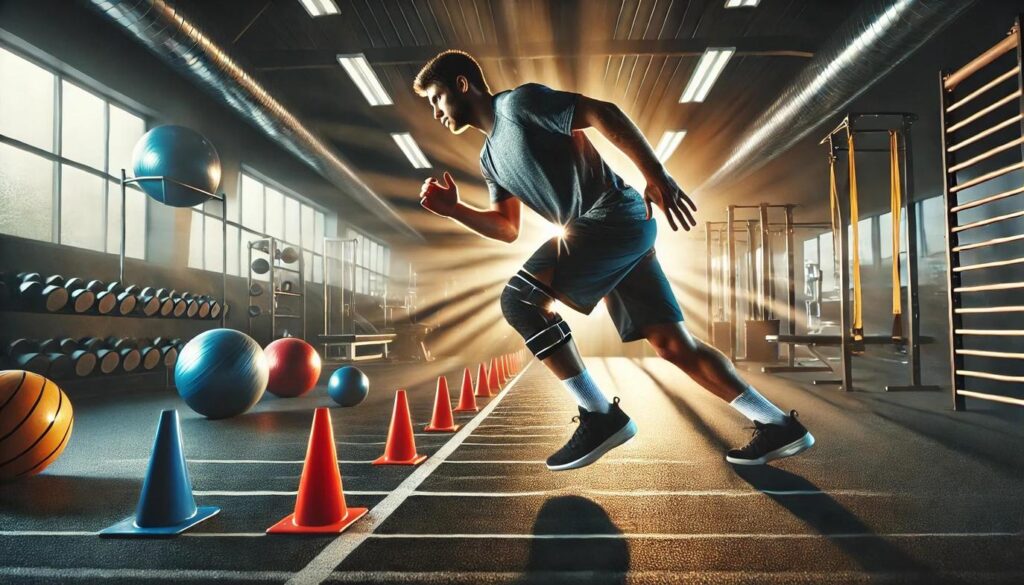Knee injuries are among the most common concerns faced by athletes and physically active individuals. These injuries can range from mild strains to complex ligament tears, often resulting in pain, reduced mobility, and disruption of daily activities or sporting routines.
Managing knee injuries effectively requires a comprehensive and thoughtful approach that addresses pain relief, restores function, and prevents further damage. Sports physiotherapy plays a crucial role in guiding patients through recovery, helping them regain strength, flexibility, and stability in the knee joint. This guide explores various sports physiotherapy approaches for managing knee injuries, highlighting key methods that support recovery and encourage a safe return to activity.
Core Physiotherapy Techniques for Knee Recovery
Starting With an Accurate Assessment and Diagnosis
The first step in managing knee injuries is a thorough assessment to understand the nature and severity of the injury. A sports physio in Dee Why uses a combination of physical examinations, patient history, and functional tests to identify affected structures, such as ligaments, menisci, tendons, or cartilage.
Accurate diagnosis is crucial for formulating a treatment plan tailored to the individual’s condition and goals. This step may also involve collaboration with medical professionals for imaging if needed. Understanding the specific injury helps in targeting therapy towards healing and restoring proper knee mechanics.
Controlling Pain and Inflammation Effectively
Immediately following a knee injury, managing pain and inflammation is a priority to reduce discomfort and prevent further tissue damage. Physiotherapy approaches often incorporate several modalities to reduce swelling, including:
- Ice therapy
- Compression
- Elevation
- Manual techniques
Additionally, electrical stimulation or ultrasound therapy may be applied to promote circulation and reduce pain sensations. Controlling inflammation early in the recovery process is vital to prepare the knee for subsequent rehabilitation exercises.
Restoring Your Knee’s Range of Motion
Knee injuries commonly result in stiffness or restricted movement, which can impede functional recovery. A critical phase in physiotherapy involves gentle mobilisation exercises that aim to restore normal joint movement without aggravating the injury.
Techniques may include passive range-of-motion exercises performed by the therapist or active movements guided by the patient. Gradually increasing the mobility of the knee joint helps prevent contractures and ensures that flexibility returns as tissues heal.
Muscle Strengthening and Stability Training
The muscles surrounding the knee—particularly the quadriceps, hamstrings, and calf muscles—play a significant role in stabilising the joint. After an injury, muscle weakness and imbalance often develop, contributing to instability and increasing the risk of re-injury.
Sports physiotherapy incorporates targeted strengthening exercises that progressively challenge these muscle groups. Balance and proprioception training are also essential components, as they enhance the knee’s ability to respond to sudden changes in movement or load. Strengthening and stability work together to rebuild confidence and the knee’s ability to perform daily tasks.

Functional Rehabilitation and Return to Activity
A crucial part of rehabilitation involves preparing the individual for a return to their specific sports or daily activities. Physiotherapists design functional training programmes to get you ready, simulating the demands placed on the knee during athletic performance. This might include agility drills, plyometrics, and sport-specific movement patterns.
Monitoring progress and adjusting the programme based on the individual’s response is key to ensuring the knee is ready to handle the stresses of competition or exercise. This gradual reintroduction to full activity helps minimise setbacks and promotes long-term joint health.
Learning How to Prevent Future Knee Injuries
Beyond recovery, sports physiotherapy emphasises educating individuals about proper movement techniques, body mechanics, and lifestyle modifications to reduce the risk of future knee injuries. Guidance may include recommendations for:
- Appropriate footwear
- Proper training loads
- Effective warm-up routines
- Targeted stretching exercises
Understanding how to recognise and respond to early signs of strain empowers individuals to take proactive steps in their health. Injury prevention strategies integrated into training regimens contribute to sustainable physical activity and overall well-being.
Using Braces and Taping for Support
Depending on the nature of the injury, physiotherapists may employ supportive devices such as braces, straps, or taping techniques to provide external stability and reduce strain on the injured tissues. These aids can assist during the early phases of rehabilitation or in situations where protection is needed during activity.
Taping methods also enhance proprioceptive feedback, which helps improve joint control and coordination. Proper application and guidance on when to use these supports are critical for effective management.
Applying Hands-On Manual Therapy
Manual therapy encompasses hands-on techniques applied by the physiotherapist to manipulate soft tissues and joint structures around the knee. These may include massage, myofascial release, and joint mobilisations aimed at reducing pain, improving circulation, and enhancing tissue elasticity.
This approach can help break down scar tissue, relieve muscle tension, and restore normal joint mechanics. Incorporating these techniques within a broader rehabilitation plan supports the healing process and complements exercise-based interventions.

Your Path to Effective Knee Injury Recovery
Managing a knee injury effectively requires patience, commitment, and a comprehensive framework. Sports physiotherapy provides this essential structure, combining thorough assessment, therapeutic techniques, and tailored exercise to support healing and restore function. This multifaceted approach, which focuses on strengthening, prevention, and education, is critical for navigating the complexities of recovery.
Ultimately, a successful outcome empowers you to regain confidence and return to your activities with resilience. The combination of expert guidance, structured rehabilitation, and psychological encouragement ensures the best possible result, reducing the risk of recurrence and promoting long-term joint health.
Frequently Asked Questions About Knee Injury Management
What is the first step in treating a knee injury?
The first and most critical step is a thorough assessment and accurate diagnosis from a qualified professional, such as a sports physio in Dee Why. This ensures your treatment plan is tailored to the specific structures that are injured, leading to more effective knee injury recovery.
How does physiotherapy help reduce knee pain?
Sports physiotherapy uses techniques like ice therapy, compression, and manual therapy to control pain and inflammation. These methods help reduce initial discomfort and prepare the knee for the crucial stages of rehabilitation, such as restoring range of motion and muscle strengthening.
Why is muscle strengthening important for knee rehabilitation?
Strengthening the muscles around the knee, like the quadriceps and hamstrings, is essential for providing stability to the joint. A targeted muscle strengthening programme helps correct imbalances caused by the injury, reducing the risk of re-injury and rebuilding functional capacity.
When can I return to sports after a knee injury?
A safe return to activity is guided by functional rehabilitation. A sports physiotherapist will design sport-specific drills to ensure your knee can handle the demands of your chosen activity. This gradual, monitored process is key to preventing setbacks and promoting long-term joint health.




